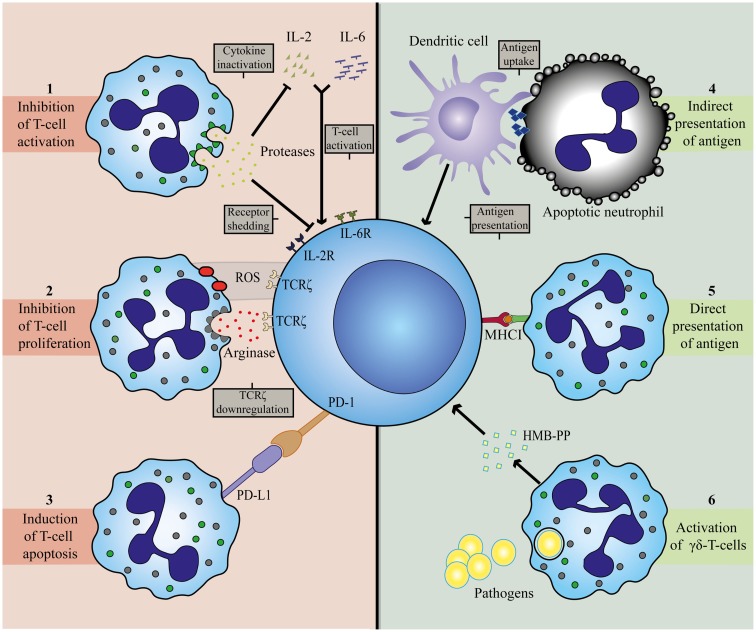Figure 2.
Mechanisms involved in T-cell inhibition (left panel) and activation (right panel) by neutrophils. Neutrophils can establish T-cell inhibition by (1) degranulation of granular constituents. The serine proteases elastase and cathepsin G inactivate T-cell stimulating cytokines, IL-2 and IL-6, and catalyze shedding of cytokine receptors for IL-2 and IL-6 on T-cells (72, 73). (2) Production of ROS and release of arginase. Both agents can result in downregulation of TCRζ on T-cells, thereby arresting the cell in the G0-G1 phase (40, 74–78). (3) Expression of PD-L1. Upregulation of this ligand is associated with interferon-dependent PD1-mediated T-cell apoptosis (35, 56). T-cell activation by neutrophils is attained by (4) indirect antigen presentation. Dendritic cells take up antigens from apoptotic neutrophils and serve as APC for T-cells (61). (5) Direct antigen presentation. Neutrophils posses the capacity to cross-prime CD8+ T-cells directly in a MHCI-dependent manner (32). (6) Release of microbial metabolites (HMB-PP). Neutrophils release bacterial products after ingestion to activate γδ-T-cells (42).

